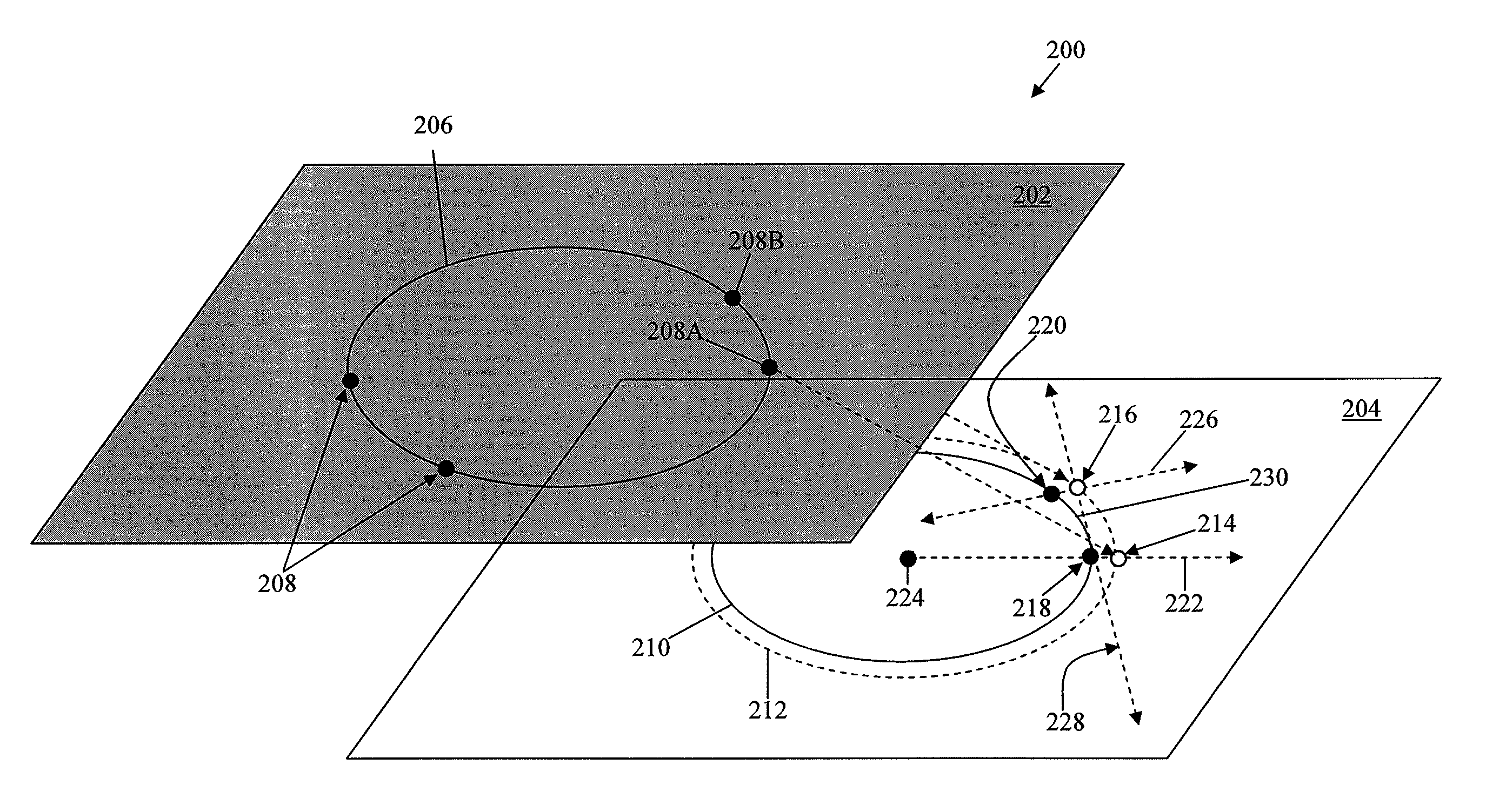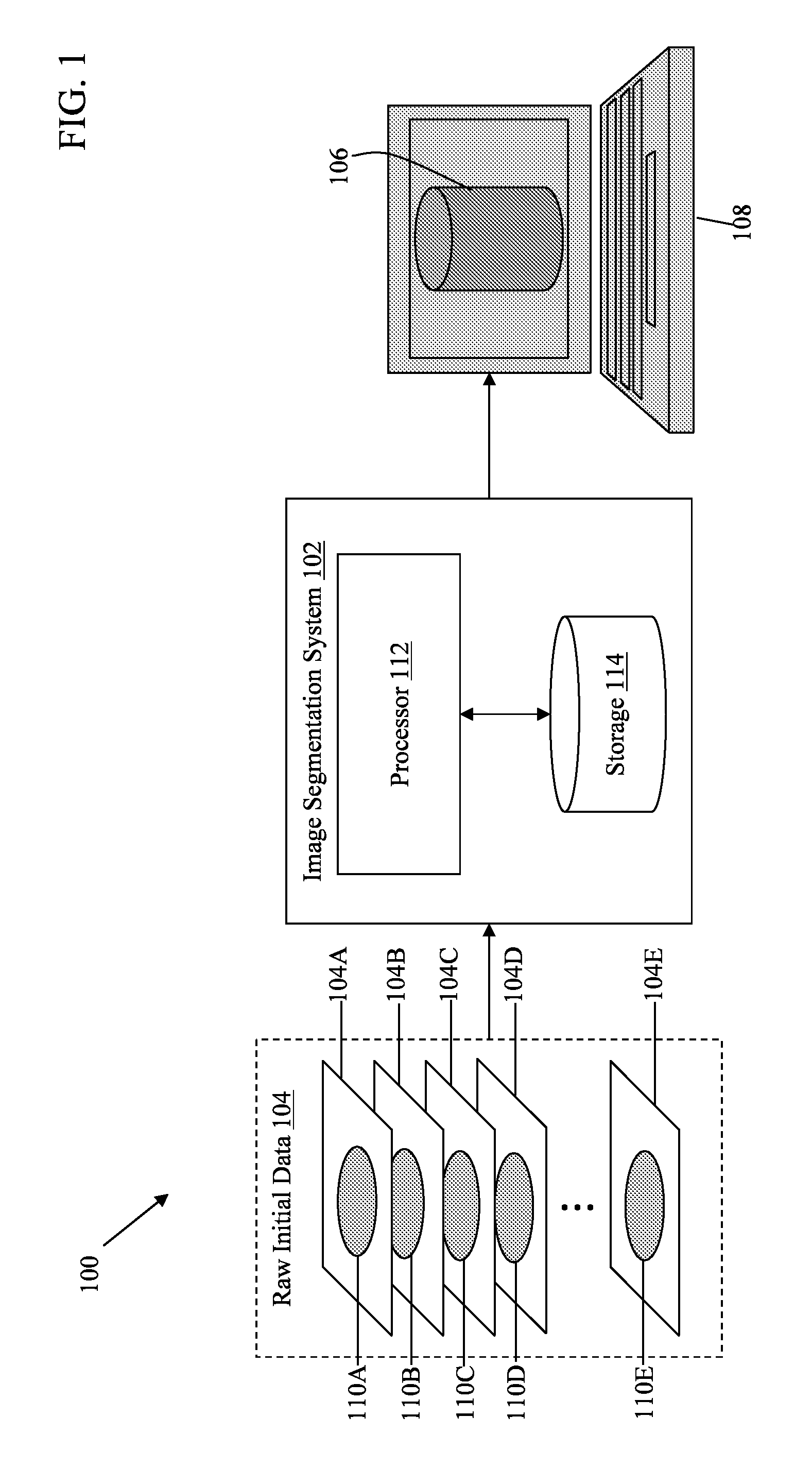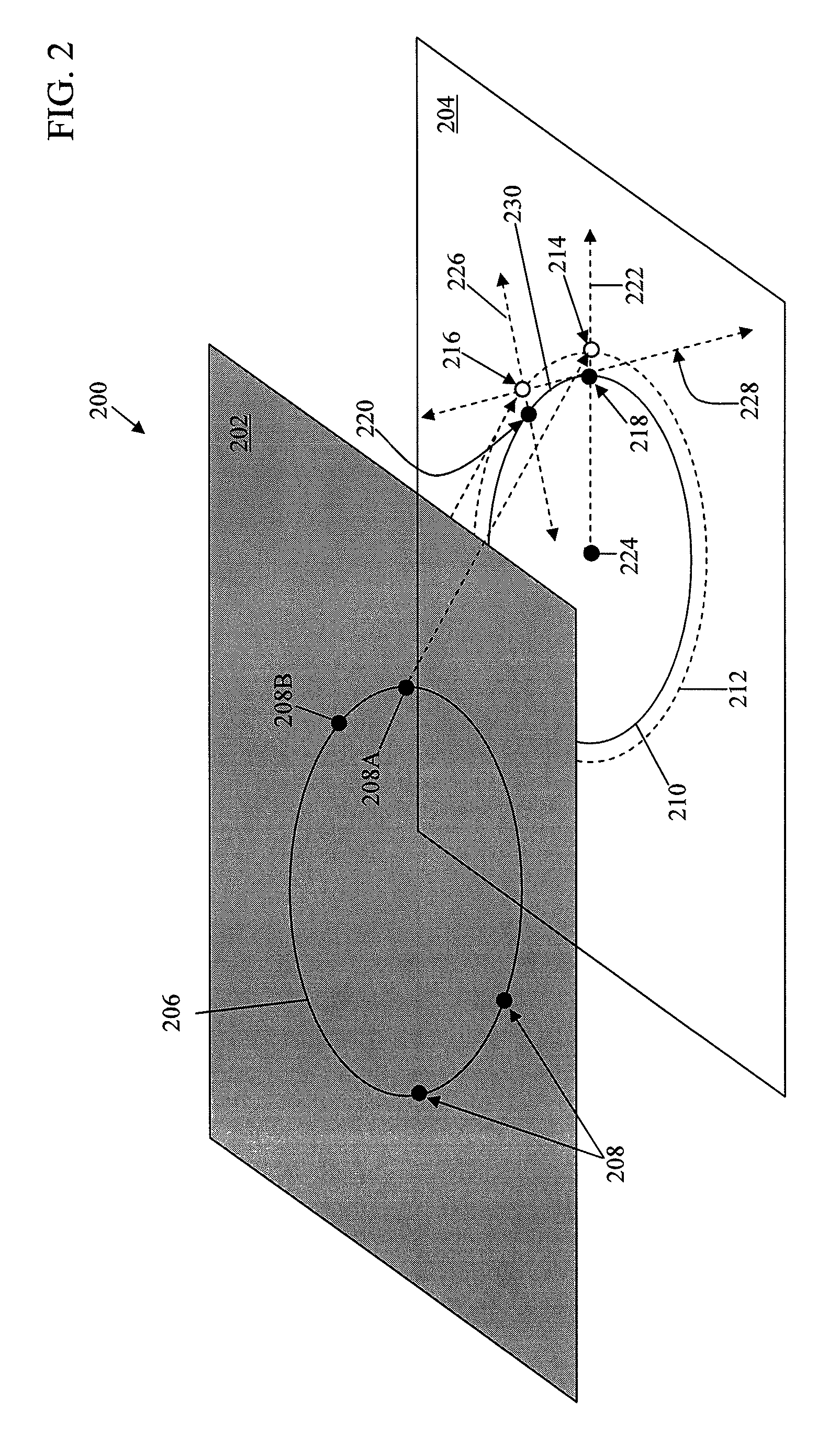Automatic image segmentation using contour propagation
a contour propagation and image segmentation technology, applied in image enhancement, image analysis, instruments, etc., can solve the problems of inability to find active contours in images, the minimum cost function may not coincide, and the image segmentation on parallel slices is typically a very time-consuming task, so as to facilitate entry and automatically propagate the contours over parallel images
- Summary
- Abstract
- Description
- Claims
- Application Information
AI Technical Summary
Benefits of technology
Problems solved by technology
Method used
Image
Examples
Embodiment Construction
[0044]In general overview, techniques are described for automatically calculating a contour in a cross-sectional image after a set of edge points has been manually inserted into an adjacent cross-sectional image. As described in more detail below, this is done by using the manually inserted edge points as seed points for the adjacent cross-sectional image, automatically determining a plurality of paths to the seed points and other possible neighboring points using a cost function, and applying a path metric that is different from the cost function to assess each of the paths and select the optimal one based on the path metric. In these techniques, a user only needs to enter control points for a first contour of a first cross-sectional image, and the contour is automatically propagated to adjacent contours. One factor used in the path metric is the orientation changes along the path. Another factor used in the path metric is the distribution of the edge points. If the edge cost at a ...
PUM
 Login to View More
Login to View More Abstract
Description
Claims
Application Information
 Login to View More
Login to View More - R&D
- Intellectual Property
- Life Sciences
- Materials
- Tech Scout
- Unparalleled Data Quality
- Higher Quality Content
- 60% Fewer Hallucinations
Browse by: Latest US Patents, China's latest patents, Technical Efficacy Thesaurus, Application Domain, Technology Topic, Popular Technical Reports.
© 2025 PatSnap. All rights reserved.Legal|Privacy policy|Modern Slavery Act Transparency Statement|Sitemap|About US| Contact US: help@patsnap.com



